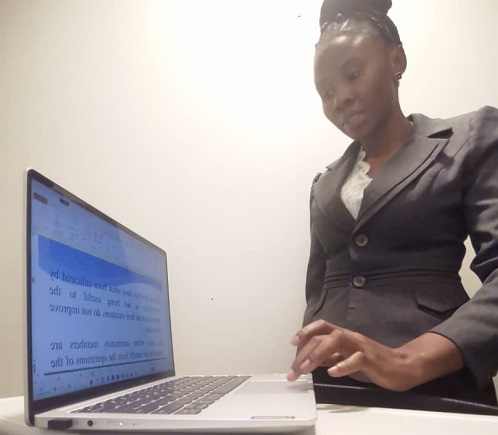In two landmark studies, land and environmental scientist Dr Stephanie Worlanyo Adator offers the clearest picture yet of how mining reshapes land and livelihoods, and how damaged terrain can be restored.
One paper distils decades of scientific research into a step-by-step restoration playbook, while the other provides econometric evidence from Ghana showing how mine expansion compels smallholders to surrender their farms for short-lived gains that often spiral into illicit mining.
Together, the findings give policymakers a roadmap to rebuild soils and communities at the same time.
Dr Worlanyo’s global research highlights why remediation cannot be treated as an afterthought. While mining has powered economic growth in countries from Australia to parts of Africa, its environmental and social costs are steep, including the loss of vegetation and biodiversity, polluted waters, disrupted land use, rising living costs and poor air quality for nearby communities.
Her synthesis organises these effects across economic, environmental and social dimensions, making clear that extraction’s benefits come alongside persistent liabilities that governments and companies must address from the outset.
The scale is sobering. In China, mining has degraded roughly 40,000 km² of land, with abandoned areas expanding by about 330 km² annually. Across Africa, more than 700 million hectares are classified as degraded, with mining identified as a major driver. These lands typically suffer from extreme pH levels, low water-holding capacity, poor structure and nutrient deficiencies that hinder vegetation regrowth and ecological recovery.
Dr Worlanyo translates the science into a workable sequence. No single remedy suffices; instead, her research prescribes a combination of physical earthworks to reshape and stabilise landforms, chemical amendments such as biochar, compost, fertilisers and chelates, and biological interventions including grasses, shrubs, microbial stimulation and targeted nanoparticles. Together, these measures can restore soil fertility, revive microbial communities and accelerate ecological succession.
She argues that mining approvals should define post-mining land use from the outset, whether forestry, agriculture, conservation, recreation or water storage, guided by land suitability analyses. This approach ensures mine closure is engineered towards a defined end state rather than improvised later.
She recommends that regulators require integrated reclamation, promote the use of manufactured technosols over low-quality salvaged topsoil, treat nanomaterials as targeted tools rather than blanket fixes, and specify end uses in permits so that bonded funds and engineering plans align with desired outcomes. This blueprint, she explains, allows mines and ministries to speed up ecological recovery and return land to productive use systematically.
In another study titled “The Impacts of Gold Mining on the Welfare of Local Farmers in Asutifi North District in Ghana: A Quantitative and Multi-Dimensional Approach,” published in Resources Policy, Dr Worlanyo provides on-the-ground data.
Her team surveyed 300 farmers across five mining-affected communities in the Asutifi North District, once part of the fabled Gold Coast, using a Heckman two-stage model to determine who leases farmland to mining firms and how that decision affects household welfare.
The analysis identifies several conversion determinants, including age, sex, distance from home to farm, proximity to roads, total land size and farming experience.
The results challenge the assumption that mining’s local windfalls translate into sustainable prosperity. Farmers who converted land reported about GH₵189 (approximately US$31.68) more in annual income than non-converters, but this gain proved short-lived. Many households were later drawn into illegal small-scale mining, known locally as galamsey, when compensation payments and short-term benefits ran out.
The study reveals a direct link between inadequate compensation, restricted access to farmland and the rise of illicit mining, connecting household economics to environmental degradation.
The compensation analysis is particularly revealing. Based on official crop prices, an acre of cocoa typically valued at GH₵28,000 in compensation can generate around 10 bags per year at GH₵660 per bag, meaning a farmer could earn an equivalent amount in just 4.5 years if the land remained under cultivation. This calculation suggests that many payouts undervalue long-term income potential, explaining why families often turn to informal mining once compensation is exhausted.
The Ghana study outlines several practical interventions for government and industry. If the push factors behind land conversion are socioeconomic, such as age, farm size, experience and group membership, and institutional, such as market access, extension services and credit, then the remedies are clear. Compensation should be aligned with multi-year productive value, paired with entrepreneurship training, and supported by extension services, input access and rural road development for households most at risk of conversion.
Such interventions, Dr Worlanyo concludes, can reduce the lure of illegal mining while stabilising rural incomes.
Across both papers, her conclusion is clear: responsible mining is a design challenge. At the national level, mine approvals must integrate end-use plans, funding and restoration frameworks from the start. At the household level, land must be priced fairly over time, while farmers receive the services and incentives needed to sustain agriculture, so communities are not forced to choose between degraded fields and dangerous pits.
Dr Worlanyo has given policymakers both a map and the mathematics to back it up. Her global synthesis shows how to heal soils, while her Ghanaian data reveal why smarter compensation and community support are essential.
If adopted, her blueprint could help nations transition from gold to green, creating reclaimed lands that safeguard biodiversity, protect water resources and offer families a sustainable future rooted in restored ground rather than exhausted soil.

